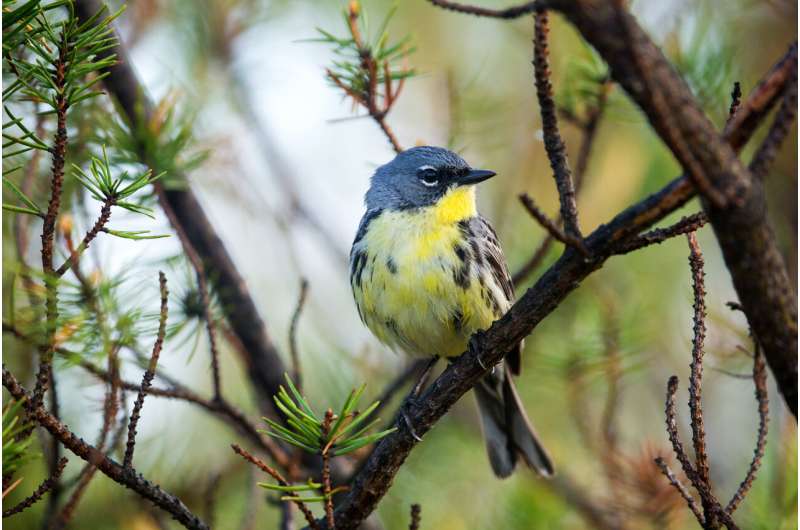A new study reveals that the quality of migratory birds’ non-breeding habitats in the Caribbean can have a significant impact on their ability to survive spring migration and the subsequent breeding season. As climate change continues to affect the region, these species may face even greater challenges in the future. The research highlights the importance of bird conservation and the need for a holistic approach to protecting migratory species.

Drought-Resistant Habitats
The study was led by scientists at the Smithsonian’s National Zoo and Conservation Biology Institute (NZCBI) and analyzed the survival of two warbler species, the Kirtland Warbler and the Black-Throated Blue Warbler. These conditions decreased adult survival during the spring migration, because in response to reduced rainfall and vegetation productivity in their Caribbean nonbreeding habitats the proportion of birds that migrated through Mississippi increased from 20% to 80%Dowell et al.
Winter-site habitat quality in particular had a persistent negative effect on survival into the subsequent breeding season for Kirtland’s warblers. With bird populations declining worldwide, understanding the drivers of their survival across their annual cycle is vital to conservation efforts. Given that the Caribbean is projected to get drier under climate change, this could pose additional trouble for these migratory bird species in the years ahead.
Tracking Migration Survival
The survival of birds during their spring migration remains one of the biggest challenges to track for researchers. Most songbirds are too small to be fitted with the GPS tags that allow individual birds to be tracked continuously. Instead, researchers have had to use less accurate means like radio transmitters, which are only detectable at a distance.
But the Kirtland’s warbler offered a rare chance for McKinnon and his team. Given that most individual birds of this species breed in a relatively small area in Michigan, the team was able to follow same-sex individuals tagged both on their non-breeding grounds in the Bahamas. Thus, they were able to obtain direct estimates of the migratory survival rates of Kirtland’s Warblers and how these correlated with environmental factors.
Validation of Survival Estimates for Migration
The researchers also used a more indirect method to estimate migratory survival rates for black-throated blue warblers in addition to the direct approach used for Kirtland’s warblers. The method, initially developed by coauthor Scott Sillett in 2002, included 14 years of capture-recapture data from the birds’ breeding grounds in New Hampshire and non-breeding grounds in Jamaica.
The study, published in the Journal of Wildlife Management, found that survival was lower for both species during migration than it was during other times. In addition, the researchers were able to confirm the indirect technique applied to black-throated blue warbler by comparing it against direct methods used on Kirtland’s warbler. This validation represents a critical preliminary step in the successful conservation of these species, as it enables researchers to obtain trustworthy estimates of survival at various stages of their annual cycle.
